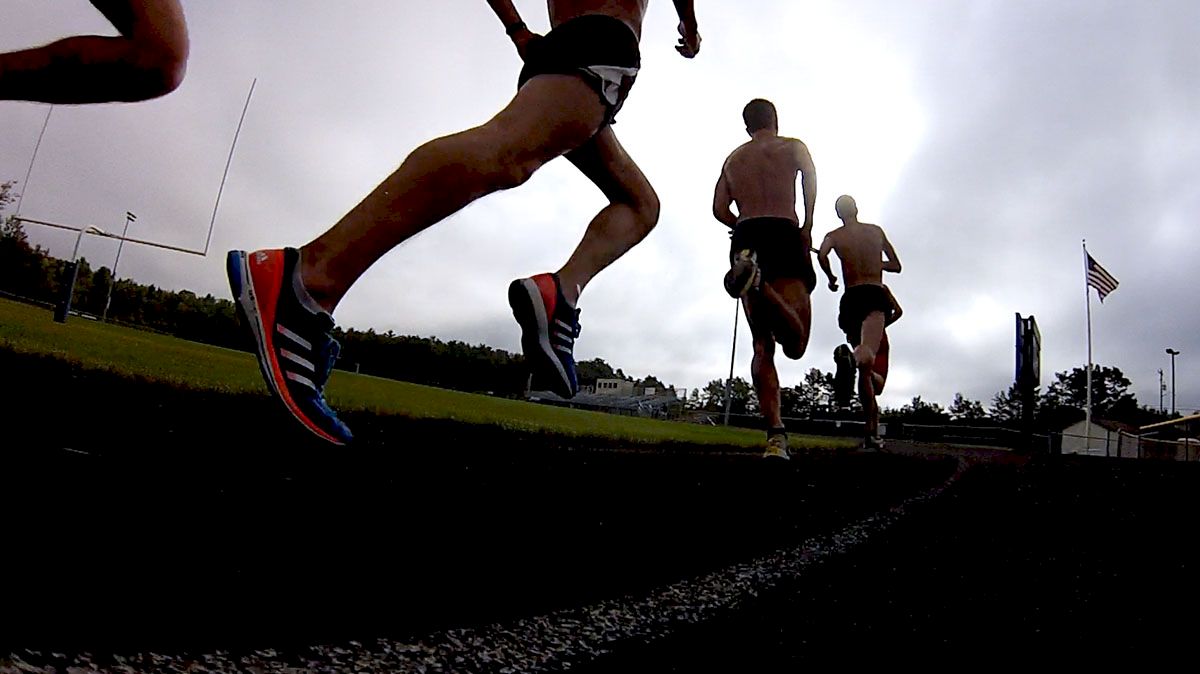Classical Conditioning and Workout Wednesday Music
Classical Conditioning and Workout Wednesday Music

It seems that about everyone has an opinion on the music selected for Workout Wednesdays. I for one usually like the music, so much so that I have gotten some of the songs for my own music player to use when I run. I have also noticed that when one of those songs comes on, such as Jupiter One's "Fire Away", it seems much easier to run effortlessly fast. Why is this? Of course "Fire Away" has an upbeat tempo and words (such as fire) that to me suggest speed, but I have also listened to it while watching runners on Workout Wednesdays perform incredibly fast and smooth workouts. At this point, when I hear the song "Fire Away" I think about fast and smooth runners and myself feel fast and smooth. In psychology, this process is known as classical conditioning. This is the repeated pairing of a neutral stimulus with a meaningful stimulus that evokes a response, so that eventually the neutral stimulus can result in the same response without the meaningful stimulus. Ivan Pavlov first demonstrated this phenomenon when he started ringing a bell every time he fed dogs in his laboratory. When people eat a series of involuntary behaviors occur that help them to digest food, including salivation. Pavlov's dogs were no different, and salivated every time they ate. Later in his experiment, Pavlov started sounding the bell to his dogs but did not present the food, and the dogs still salivated. This allowed Pavlov to conclude that if you repeatedly pair a conditioned stimulus (known to evoke a response on its own) with an unconditioned stimulus, you can eventually use the unconditioned stimulus to get that same response, without use of the conditioned stimulus (Pavlov, 2003). In Pavlov's experiment, the food was the conditioned stimulus, the bell was the unconditioned stimulus, and salivation was the conditioned response. In my example, "Fire Away" is the unconditioned stimulus, the conditioned stimulus is the vision of fast runners doing great workouts, and the conditioned response is actually running fast and smooth.
If you find the Workout Wednesdays inspirational, you could also use them to help you perform at your best. You could listen to the music during hard training sessions, or before races. But other runners use different types of cues as their unconditioned stimulus. When training for the 2007 World Championships, Kara Goucher used the word "fighter" as her cue. Kara and her coaches would use the word during particularly tough training sessions when she was running well (Barcott, 2010). Thus, Kara was paring the word "fighter" with her strongest running performances, just as Pavlov paired the bell with salivation. Then during races, Kara could use the word to remind herself to perform just as she had during those challenging workouts. After all that practice, the word "fighter" had become the equivalent of the bell and the word could be used to inspire great performance.
There is nothing inherently special about the word "fighter", but it became a powerful cue for Kara because she used it over and over at the right times. If you decide to use classical conditioning and cues yourself, the cues could be other words or even simple motions (such as the wipe of your brow). This is what you want to become your bell. Next, you should incorporate this word or gesture at first when you are running well. So if your cue is a wipe of the brow, you should wipe your brow in practice situations when you are doing particularly well. Thus, you are pairing the cue (in this case the wiping of your brow) with a good performance. Later you can use the same cue in an important situation or when you are struggling, and the cue will evoke the same strong performance and the feelings associated with it. If you first introduce it when performing poorly, using the phrase in the future when you really need it could evoke a poor response. The cue also cannot be used at random and must be practiced over and over for it to be effective. The cue must be paired many times in practice with the feelings you hope to have during tough races when you use the cue. Then when you use the cue in a race, you can feel just as dominant and smooth as the stars of Workout Wednesday.
References
Barcott, B. (March 2010). Mind games. Retrieved December 21, 2010, from
http://www.runnersworld.com/article/1,7124,s6-243-297--13431-0,00.html
Pavlov, I. P. (1960). Conditional Reflexes. New York: Dover Publications.